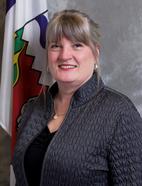Thank you, Mr. Speaker. This is an interesting topic and certainly I, like my colleagues, am very concerned for the safety of our workplaces in hospitals and care facilities and all facilities in the Northwest Territories. Safety in the workplace has to be a paramount concern.
Some other Members have referred to many incidents and I don’t know if that would be a fair characterization because I don’t know the numbers of incidents involved. I think back to just a few weeks ago when there was an incident on Parliament Hill and the good members of the Royal Canadian Mounted Police, right after that incident, put two police officers on the driveway here at the Legislative Assembly in response to that one incident that occurred on Parliament Hill. I bring up that because it is indicative to me that I don’t think that that’s the kind of response that we can afford to some isolated incidents at Stanton Territorial Hospital.
I think we need a broader take on a safe workplace. We need to look at perhaps enclosed areas. I know people in Justice that deal with probation services and deal with probation clients and so on, when they are dealing with certain clients there is a safe place to go where they are protected. So I think we need to look at this in a broad context.
When this came up in committee, I mentioned that I don’t think we have enough money, enough resources to prepare for people in every place in every space where there’s an inevitability, where there’s a possibility, even a relatively high possibility, of something occurring. Mr. Nadli mentioned the psychiatric ward or the emergency ward and I think we have to be realistic. I’m going to try to be realistic about this. I don’t think that we can have people that are solely dedicated to security that are at a place, at a workplace 24/7 in case something happens. I think there may be a way, though, when we look at this in the broader context, there may be a way of enabling, equipping, training, preparing people to respond to an emergency that are already in the workplace. I don’t know who those people might be, but I think we need to take a really multi-faceted approach to this issue of safety in the workplace. I just don’t think we should set our hearts on something that isn’t reasonably affordable or sustainable or fair, because we are talking about very specifically, in this motion, Stanton Territorial Hospital.
As I said also in committee, we have drugs and alcohol and problems with violence in every community in the Northwest Territories. We have nurses attending nursing stations by themselves in a community with no RCMP presence and they are dealing with people, the same kinds of issues, everything from A to Z. It’s not the concentration and the traffic and the volume of people you’d be dealing with at a territorial facility like Stanton, but it is still individual cases where those particular employees of ours could be at some risk.
So, I think we need to discuss this. I think we need to consider recommendations that have come out as a result of inquiries. I just don’t think that having dedicated security people in one facility, in one community is the answer to the problem. I think we need to take a broader view of this and I will support this motion in the hopes that – it is a recommendation – it will lead to more discussion about this. But I just want to say that I’m concerned about the safety in the workplace of all of our health care workers, of all of our GNWT workers, but certainly in areas where there’s a higher risk of potential harm. I think we need to take a very broad approach to how we can implement things to protect the interests of those folks that are serving us in those places. Thank you.
